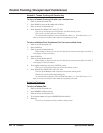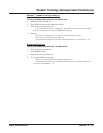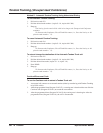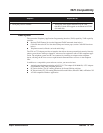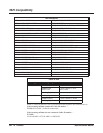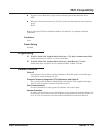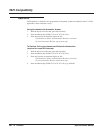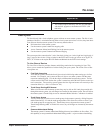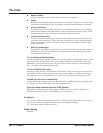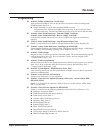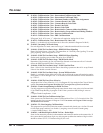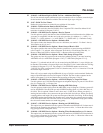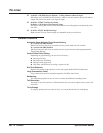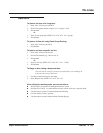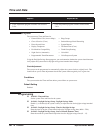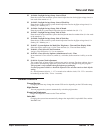
Tie Lines
562 ◆ Features Aspire Software Manual
● Operator Calling
A tie line caller may be able to dial 0 for the remote system’s operator.
● Paging
Internal and External Paging may be available to tie line callers. This allows co-workers in adja-
cent facilities connected by tie lines, for example, to broadcast announcements to each other.
● Direct Trunk Access
This option allows tie line callers to directly access a trunk for an outside call by dialing #9
and the trunk’s number. Like Trunk Group Access, this bypasses the remote system’s Trunk
Group Routing/ARS. Any toll charges are incurred by the remote system.
● Forced Trunk Disconnect
The Forced Trunk Disconnect option allows a tie line caller to disconnect (release) another
extension’s active outside call. The tie line caller can then place a call on the released trunk.
Tie line callers should use Forced Trunk Disconnect only in an emergency, when no other
trunks are available.
● DISA/Tie Trunk Barge In
The DISA/Tie Trunk Barge In option allows a tie line caller to break into another extension’s
established call. This sets up a three-way conversation between the intruding party and the
two parties on the initial call.
Tie Line Outgoing Call Restriction
You can selectively deny incoming tie lines access to your system’s outgoing trunk groups. Incom-
ing tie line callers could be able to access your outgoing WATS lines, for example, but not your
DDD trunks. The system allows you to set up a restriction matrix for each of your incoming tie
lines - for each of your outgoing trunk groups.
Tie Line Toll Restriction Class
Incoming tie lines can have a Toll Restriction Class and be subject to the system’s toll restriction.
For example, Toll Restriction can prevent users from dialing 1-900 calls. When an incoming tie
line caller tries to use system trunks to dial a 1-900 service, Toll Restriction will deny the call.
Flexible Tie Line Service Compatibility
You can individually program tie lines for Dial Pulse (DP) or DTMF incoming or outgoing signal-
ing. Outgoing tie lines can be either wink start or immediate start.
Wink Start Mode Does Not Require a DTMF Receiver
E&M trunks in wink start mode do not require a DTMF receiver for dial tone detection. It is
detected with the wink. This frees the DTMF receivers for other use.
Conditions
(A.) Tie lines require the installation of a 4TLIU-A1 PCB. Each PCB provides four tie line ports.
(B.) Tie line service must be purchased from your local telephone company.
(C.) The Aspire S does not support tie lines.
Default Setting
Disabled.



